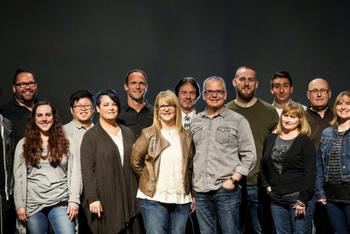
“I felt like I had touched a live wire,” said professor Holly Ordway, describing her reaction to John Donne’s majestic poem “Holy Sonnet 14.” There’s something happening in this poetry, she thought. I wonder what it is. Ordway recalls it as the moment her previously atheistic worldview allowed for the possibility of the supernatural. Eventually she would believe in the transforming reality of the resurrected Christ.
Touching a live wire—that must have been how Peter, James, and John felt on the day Jesus took them to a mountaintop, where they witnessed a dramatic transformation. Jesus’s “clothes became dazzling white” (Mark 9:3) and Elijah and Moses appeared—an event we know today as the Transfiguration.
Descending from the mountain, Jesus told the disciples not to tell anyone what they’d seen until He’d risen (v. 9). But they didn’t even know what He meant by “rising from the dead” (v. 10).
The disciples’ understanding of Jesus was woefully incomplete, because they couldn’t conceive of a destiny that included His death and resurrection. But eventually their experiences with their resurrected Lord would utterly transform their lives. Late in his life, Peter described his encounter with Jesus’s Transfiguration as the time when the disciples were first “eyewitnesses of his majesty” (2 Peter 1:16).
As Professor Ordway and the disciples learned, when we encounter Jesus’s power we touch a “live wire.” There’s something happening here. The living Christ beckons us.
Source: Our Daily Breat

 Insight for Living
Insight for Living  GPS Radio
GPS Radio